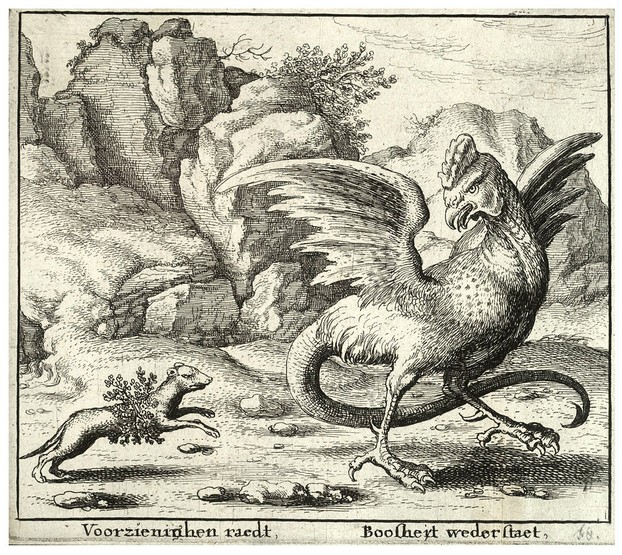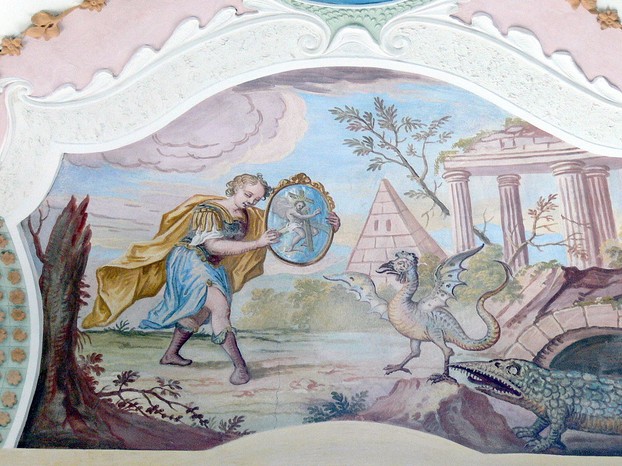Basilisks and cockatrices, creatures of myth and legend, what are they? Not the most well known of the mythical creatures, a basilisk does have its 15 minutes of fame in the Harry Potter book "Harry Potter and the Chamber of Secrets." Basilisks, not only in Harry Potter's world, are dangerous, evil creatures with the power to kill with a single glance.
A basilisk is usually depicted as a crested reptile, the king of serpents. In fact there is a kind of lizard called "Basiliscus plumifrons" or Plumed lizard, also Green Basilisk, the male of which has 3 crests: on the head, on the back, and on the tail (the female has only a crest on the head). These lizards are able to run across water (at least for a short distance) and are not dangerous at all.
Back to the mythical basilisk, though, this is a lizard or snake, or a composite of a reptile and rooster, with the head and front legs of the rooster and a reptilian tail. And here we get to the cockatrice - sometimes the creatures have wings, and then they are called cockatrices.












 I Published “My Reflections”on 10/02/2025
I Published “My Reflections”on 10/02/2025
 Best "Nutcracker" Movie of all Timeon 03/08/2019
Best "Nutcracker" Movie of all Timeon 03/08/2019
 Lascaux Cave Paintingson 01/18/2018
Lascaux Cave Paintingson 01/18/2018
 Bridges of the Hudson Valleyon 11/20/2017
Bridges of the Hudson Valleyon 11/20/2017



What do you think about Basilisks (or Cockatrices)?
What interesting creatures. I'd never heard of them before now.
Very interesting. Thank you, Jennifer!
I found a version of that legend - a basilisk in a well in Vienna! Thanks!
I remember a coin from Austria a few years back that featured a basilisk, and the legend had it in a well.